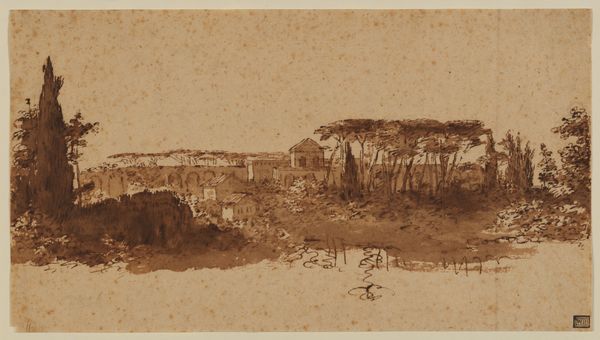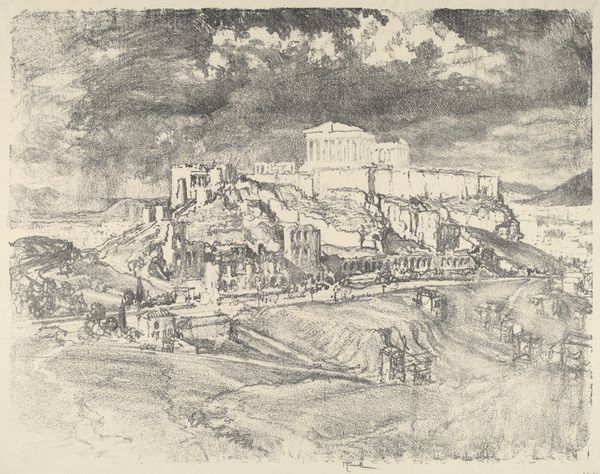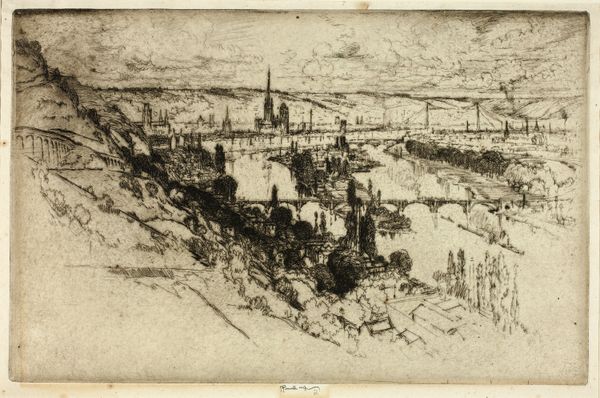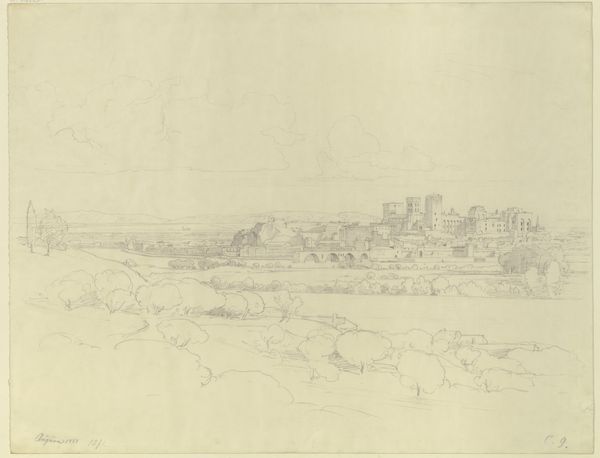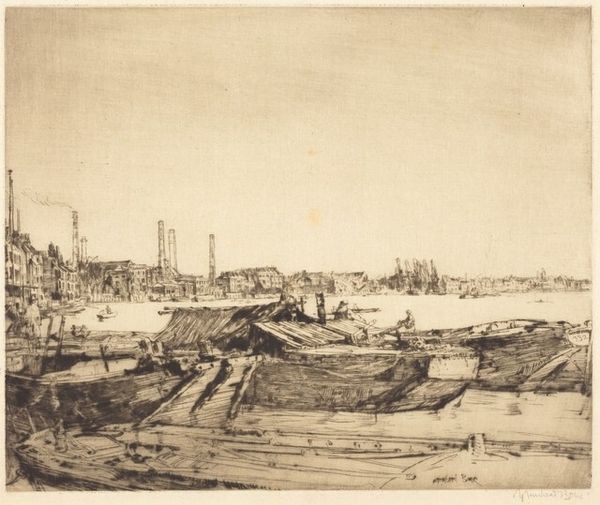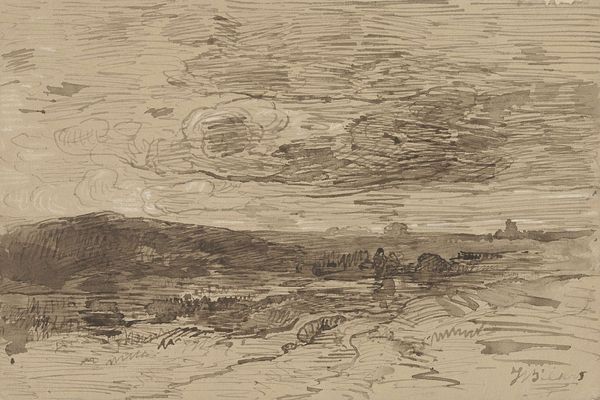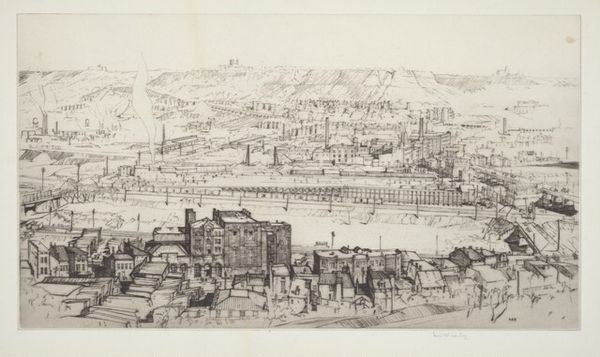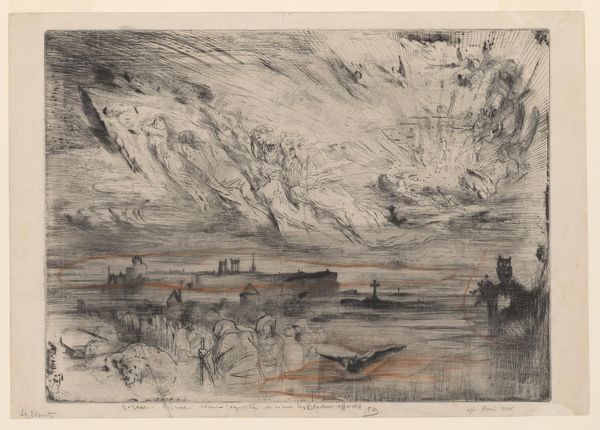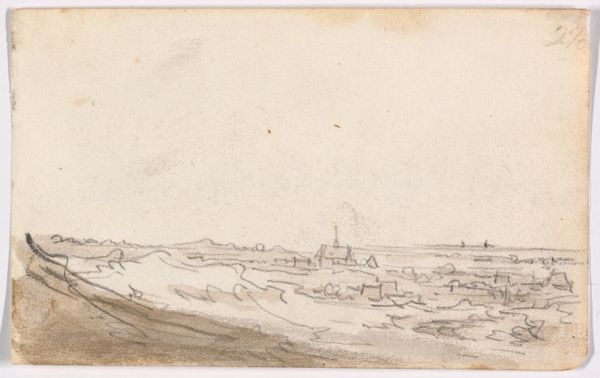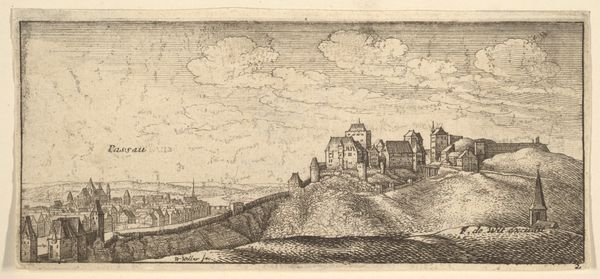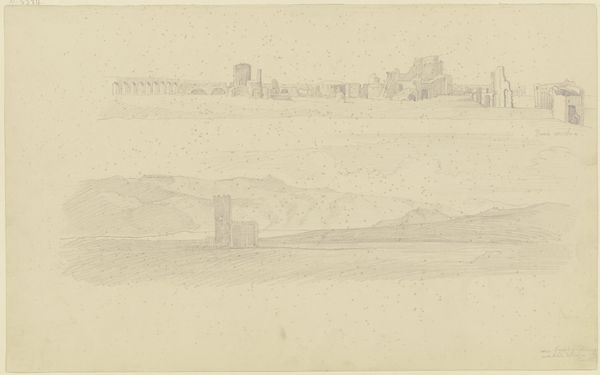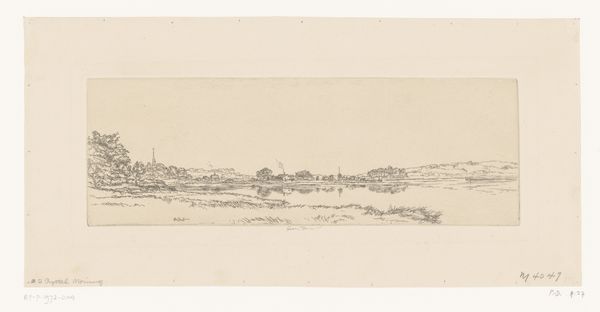
drawing, print, etching, paper, ink
#
drawing
#
ink painting
# print
#
etching
#
pencil sketch
#
landscape
#
etching
#
paper
#
ink
#
romanticism
#
cityscape
#
watercolor
Dimensions: 85 × 136 mm
Copyright: Public Domain
Curator: Here we have John Martin's etching, "The Destroying Angel," created in 1833. It is an arresting city scene done in ink. Editor: My first impression is of an overwhelming sense of dread. The sky seems to be bearing down upon this unsuspecting cityscape. The overall monochrome adds to the somber mood. Curator: Martin was quite interested in exploring themes of divine judgment and the sublime, which resonated deeply in the Victorian era. What is particularly noteworthy is that as an etching it relies on an industrialized method of reproduction and can thus disseminate images of dramatic license much easier. Editor: Absolutely. The "destroying angel" motif, drawn from biblical accounts of plagues and divine wrath, taps into very primal fears of annihilation and societal collapse. I can feel that anxiety radiating out of it. The symbolism of darkness engulfing light feels particularly potent. The use of architecture suggests both humanity's accomplishments and its frailty against greater powers. Curator: And how that architectural ambition gets translated materially—through buildings and the human labor that erected them. Think about the social anxieties embedded in these types of images during times of urbanization, industrial output, or colonialism. Editor: The landscape itself almost seems like a character in this narrative. Do you notice how even the finer details, rendered possible via the intaglio printmaking process, like the clouds, almost resemble clawing hands, reaching down toward the earth? I see strong parallels to earlier apocalyptic art, reminding us that these anxieties aren’t necessarily modern. Curator: By understanding the socio-economic context alongside Martin's choices of line and composition, we gain greater insight into how cultural fears were visually articulated and consumed as spectacle for moral education in 19th-century society. Editor: It’s remarkable how much emotional weight a black-and-white print can carry across time and cultural contexts. This image continues to resonate. Curator: Indeed. The enduring power rests in how deeply this vision of destruction relates back to what it means to exist on an Earth where people can create a thing of beauty from earthly materials while living under impending and volatile elements of change.
Comments
No comments
Be the first to comment and join the conversation on the ultimate creative platform.
